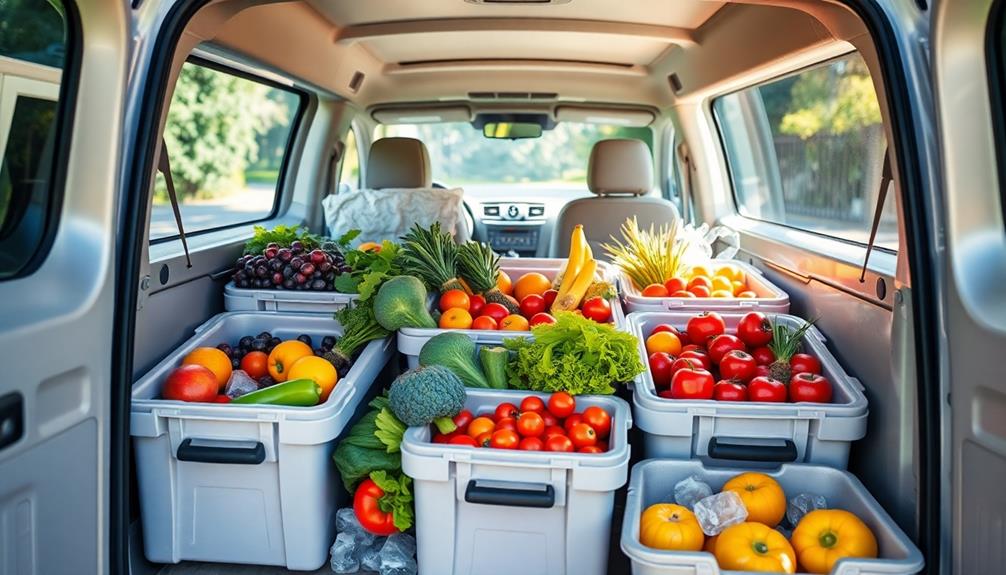Raw food safety documentation systems are essential for you to maintain compliance and protect against foodborne illnesses. These systems include HACCP plans, Standard Operating Procedures (SOPs), and rigorous record-keeping methods. They help you manage hazards in real-time and guarantee staff receive proper training. Implementing digital solutions can make documentation easier and more accessible, keeping your operations efficient. Always review and update your documentation to meet evolving regulations. This proactive approach not only minimizes risks but also boosts your audit preparedness. Stick around, and you'll discover deeper insights into optimizing your food safety practices.
Key Takeaways
- Implement a HACCP plan to identify and control food safety hazards throughout the raw food production process.
- Utilize Standard Operating Procedures (SOPs) to provide clear guidelines for the safe handling of raw foods.
- Maintain detailed records of temperature controls and cleaning schedules to ensure compliance and safety.
- Use traceability systems to document the supply chain flow of raw ingredients for effective recall management.
- Leverage digital documentation solutions to streamline processes and enhance accessibility for audit readiness.
Importance of Food Safety Documentation
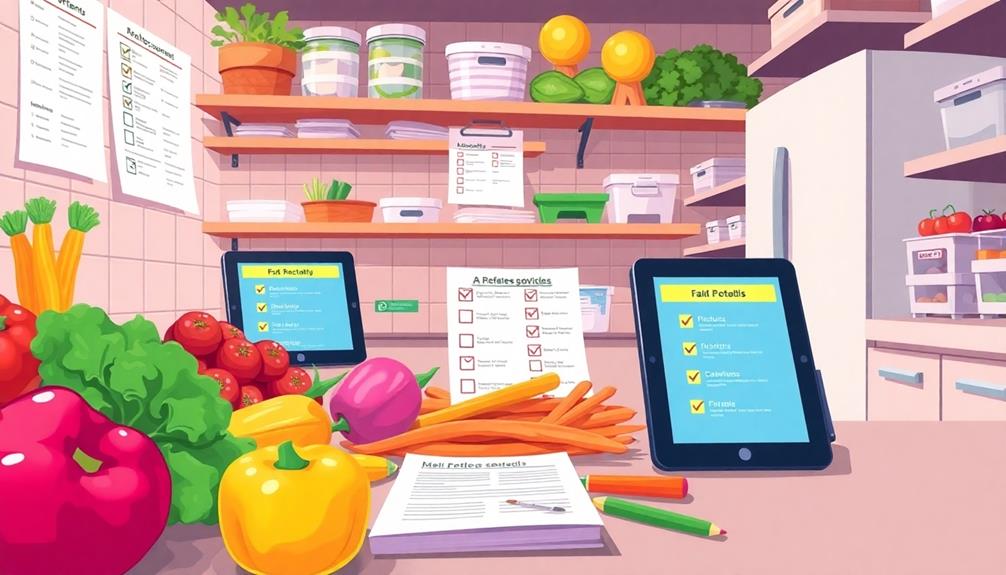
Food safety documentation isn't just a formality; it's a critical component in ensuring the safety and quality of the food you serve. By maintaining thorough documentation, you help safeguard public health against foodborne illnesses like Listeria and Salmonella. This is akin to ensuring a clean and healthy environment, as seen with the benefits of air quality management in other industries.
It allows you to meet regulatory compliance with agencies like the FDA and EFSA, ensuring that your operations adhere to necessary safety standards.
Effective food safety management systems rely on well-documented procedures and records. These records not only serve as proof of compliance during audits but also minimize the likelihood of costly product recalls. With solid documentation, you can streamline employee training, equipping your team to recognize and manage risks effectively.
Real-time monitoring of food safety documentation enhances your ability to manage potential hazards proactively. By utilizing tools like HACCP plans, you can implement robust risk management strategies that keep food safety at the forefront of your operations.
Types of Essential Food Safety Documents
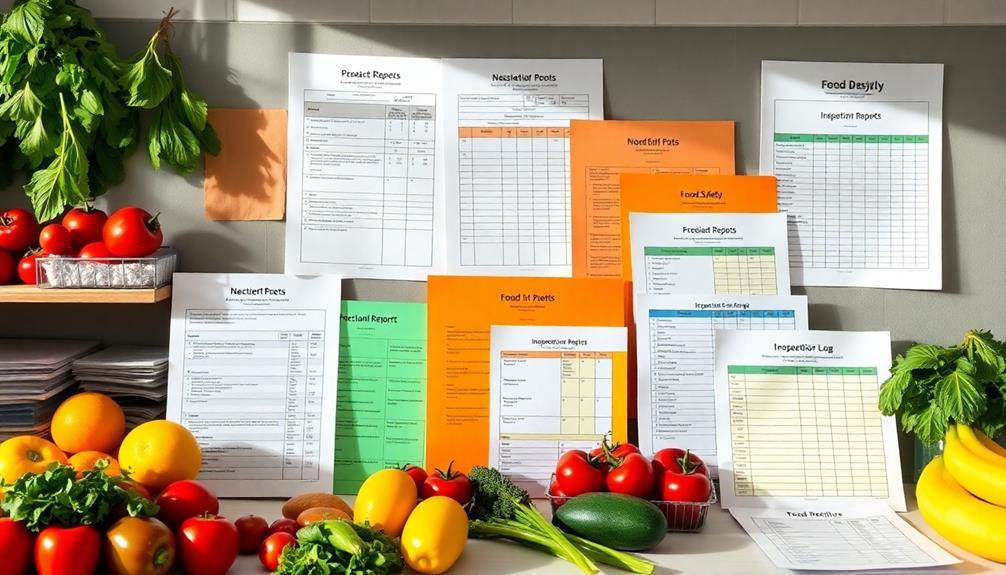
Effective food safety documentation is crucial for any operation dealing with raw products.
You'll need to establish a robust food safety management system to guarantee compliance with industry standards. Start with your HACCP plan, which identifies and controls food safety hazards throughout the production process. This plan is critical for maintaining the safety of your raw food items.
Next, implement Standard Operating Procedures (SOPs). These detailed, step-by-step guidelines help your team handle, process, and store raw foods safely, assuring quality standards are met.
Record keeping is also essential; maintaining logs for temperature control, maintenance, and cleaning schedules allows you to track the safety of your products effectively.
Moreover, consider incorporating traceability systems to document the supply chain flow of raw ingredients. This will enable you to manage recalls efficiently in case of contamination.
Best Practices for Documentation

Establishing best practices for documentation can considerably enhance your raw food safety management system. Begin by utilizing Standard Operating Procedures (SOPs) to provide clear, step-by-step guidelines for handling raw food safely. This guarantees consistency and compliance with food safety standards.
Implement traceability systems to document the flow of raw materials from suppliers to production, facilitating efficient recalls and accountability during food safety issues. Accurate and complete record-keeping is essential. Maintain logs of temperatures, cleaning schedules, and maintenance activities to support compliance with regulatory audits.
Regularly review and update your documentation to align with evolving regulations and industry best practices, making sure all procedures remain relevant and effective. It's critical to stress the importance of food safety documentation during employee training. Employees should understand the need for accuracy and accessibility. This helps foster a culture of food safety within your organization.
Employee Training in Food Safety
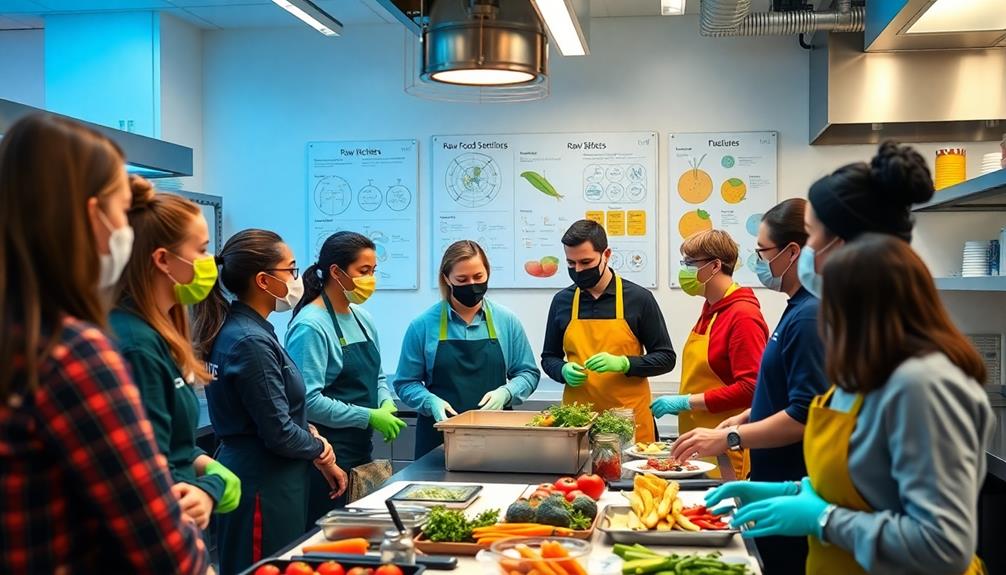
To maintain a safe food environment, employee training in food safety is essential. You need to guarantee your staff understands their roles and responsibilities, which greatly reduces the risk of foodborne illnesses. Start with a structured onboarding process that incorporates food safety training, instilling a culture of compliance from day one.
Regular training sessions should focus on best practices and cover the importance of documentation systems, including how to use digital tools effectively. Continuous training and periodic refreshers are crucial for keeping everyone updated on the latest food safety regulations. This ongoing education helps reinforce staff qualifications and guarantees they remain competent in their roles.
Don't forget the importance of documenting training records. This is critical for compliance verification during audits, making it easy to demonstrate that your staff is adequately trained.
Technology Solutions for Compliance
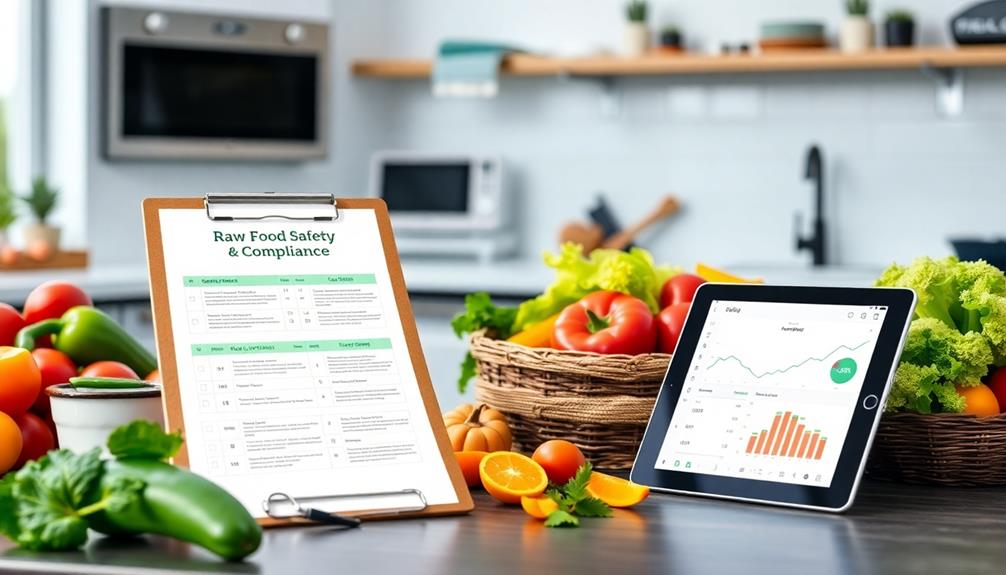
In today's fast-paced food industry, leveraging technology solutions for compliance can streamline your raw food safety documentation processes considerably. By integrating digital systems into your food safety management processes, you can reduce the time spent on manual documentation by up to 1000%.
Cloud-based platforms enhance accessibility, allowing authorized personnel to access and update records from any device, anywhere.
Automated monitoring tools, linked with Internet of Things (IoT) devices, track critical control points (CCPs) in real-time. This guarantees compliance with food safety regulations without the need for constant manual checks.
Customizable checklists and templates within these digital systems help you meet all compliance requirements according to local and international food safety standards.
Additionally, robust document management features centralize your food safety documentation, making it easier to maintain audit readiness.
With a reliable traceability system in place, you can manage the flow of products throughout your supply chain efficiently.
Frequently Asked Questions
What Is the Food Safety Management System Documentation?
A food safety management system documentation's a structured collection of policies and procedures that helps you identify, prevent, and control food safety hazards, ensuring compliance with regulations and enhancing consumer trust in your operations.
What Is FSO System for Food Safety?
An FSO system for food safety helps you manage and document practices effectively. It includes components like HACCP plans and real-time monitoring, ensuring compliance with regulations while enhancing accountability and traceability in your food operations.
What Are the Examples of Food Safety System?
Think of food safety systems as the backbone of a healthy kitchen. You'll find examples like HACCP plans, Standard Operating Procedures, recall plans, traceability systems, and food safety management systems ensuring quality and accountability in food handling.
What Is FSMS Certification?
FSMS certification, like ISO 22000, shows your commitment to food safety. It requires a systematic approach to managing hazards and compliance with regulations, enhancing consumer trust and giving you a competitive edge in the market.
Conclusion
In the bustling kitchen of food safety, documentation is your sturdy shield, protecting both your business and your customers. By embracing best practices and harnessing technology, you weave a safety net that catches potential hazards before they slip through the cracks. As you cultivate a culture of training among your employees, you'll turn the tide against foodborne risks, ensuring your raw food remains as pristine as a morning dew. With vigilance, you'll serve not just meals, but peace of mind.



